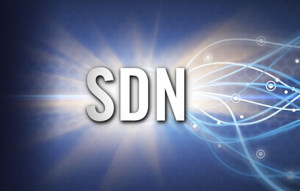SDNs: an introduction

Introducing SDNs
Have you ever heard somebody talking about SDNs? Most people say that they are going to become the next baseline on Data Center designing, others say they already are, while some aren’t really sure about why should they use them if they can do the same with their New Generation Data Center without even paying attention to SDNs. I don’t know who’s right, but whoever is, I’m sure we should be aware of what SDNs are, what are they used for and how do they work.
SDNs or Software-Defined Network are a relatively new and growing way to implement and implant computer networks services through a high level abstraction (programing) instead of doing this manually. This is done by separating control plane from the data one, and communicating them with a communication protocol, which usually is the open standard OpenFlow.
The great increases in the last years of east-west traffic, cloud services and their use of WAN links, big data philosophy and the pressure Data Center’s administrators feel have been the motor of change in Data Centers. All these have led to the idea that Software-Defined Networks will become the saviors because the following benefits:
- The innovation they permit (multiple startups focused on SDN APIs are being born every year).
- Reduction of Capital Expenditures, because they allow the reutilization of existing hardware.
- Reduction of Operating Expense, due to the reduction of configuration and administration complexities.
- Flexibility and agility increase when enterprises need to change something in their networks.
After explaining what SDNs may mean for our Data Center networks, you may be convinced that they are pretty nice, but you may be wondering: how they work and what should you do to implement them into your networks.
The easiest way to think about the way SDNs work is comparing them with a personal computer: there are some applications (virtualization, load balancing…) working with an API of the OS, and this Operating System (SDN Controller) uses OpenFlow Instructions Set (Match, modify, translate…) to communicate with the Network Hardware (Network equipment).

This aim of this post is introducing SDNs; and I don’t want to explain them in great deep, so if you are still interested in knowing more about how SDNs work, I recommend you to take a look at this following document.
I wish this post has helped you to know more about what SDNs are, and what are they used for. In future posts I will focus more on how should we use them in our Data Center example for a banking firm. Keep tuned for more!
